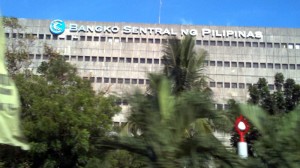BSP said to have room to hike key rates anew
After assuming a “hawkish” stance in recent months, Bangko Sentral ng Pilipinas now has scope to further hike its overnight policy rates for the rest of the year by a total of 50 basis points to temper inflationary pressures, an economist from Maybank Kim Eng said.
In a research note dated Sept. 12, Maybank’s Luz Lorenzo expected more pressure on consumer prices because of tight supply, pending petitions for adjustments in utility rates and potential power shortages.
Last Thursday, the BSP raised both the overnight borrowing and special deposit account (SDA) rates by 25 basis points to 4 percent and 2.5 percent, respectively.
The SDA is a potent monetary tool created by the BSP to mop up excess liquidity in the system. Through the SDA, the central bank offers higher yielding deposit instruments that can cascade to a broader market.
Lorenzo noted that this was the first time the BSP had taken simultaneous action on two policy tools since the regulator assumed a hawkish stance in April, when it raised the reserve requirement by 1 percentage point.
Article continues after this advertisementThis developed as the baseline forecast of the BSP had risen to about 4 percent—the high end of its 2015 inflation target.
Article continues after this advertisementCiting the latest statistics, Lorenzo said more immediate pressure would come from food and nonalcoholic beverages as inflation continued to accelerate to 8.3 percent year-on-year in August from 8.2 percent in July.
“Metro Manila was the culprit as inflation eased in the rest of the country. This points to logistical issues continuing to be a source of inflationary pressure,” she said. “We believe this is one reason why stronger policy action was taken … to rein in inflation expectations and preempt potential second-round effects.”
Lorenzo was referring to the truck ban implemented in the city of Manila.
Also, Maybank Kim Eng is keeping its 2014 GDP growth forecast of 6.7 percent, Lorenzo said. While growth in domestic liquidity in July had slowed to 18 percent year-on-year, it’s still more than enough to fund a growth rate of 7 percent of GDP, even if inflation were to stay at 5 percent.
“We believe the economy c an continue to grow because of the measured pace of monetary tightening as well as the impact being muted by adequate liquidity,” she said. Doris C. Dumlao
